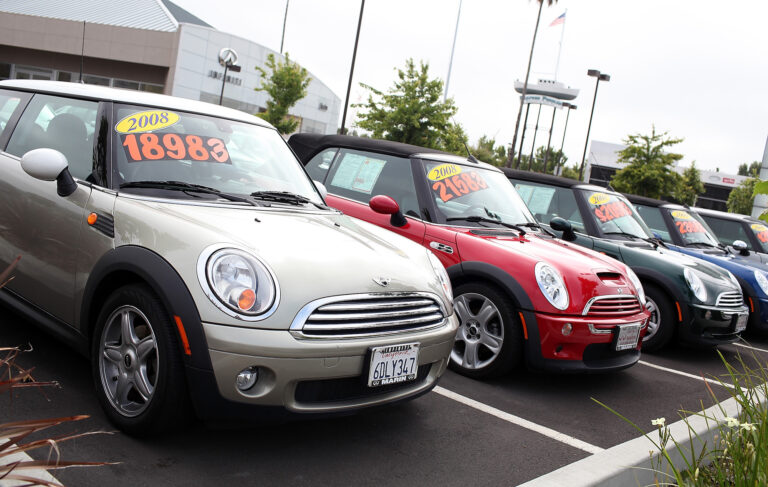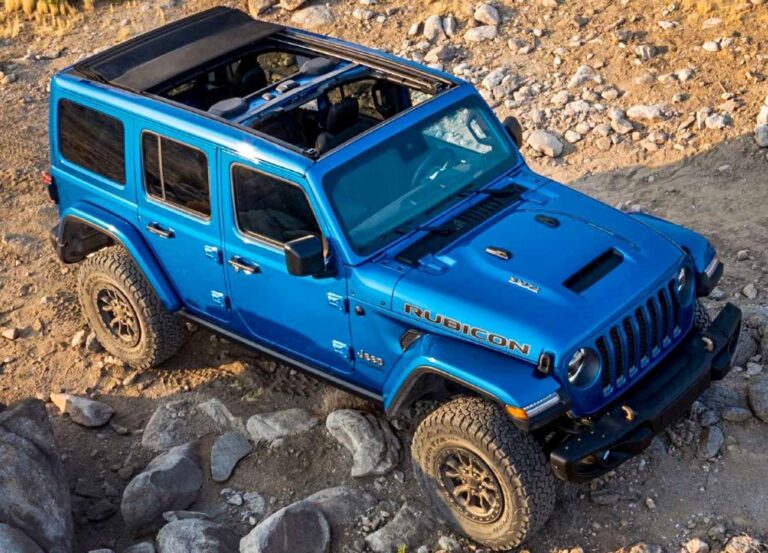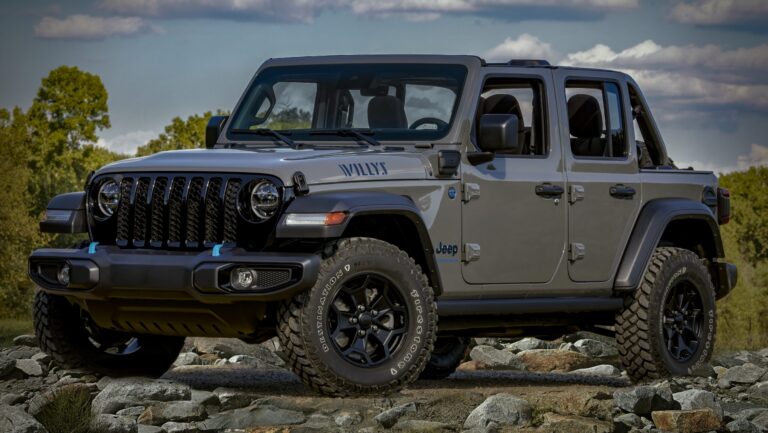The Enduring Spirit: Exploring the 1980 Jeep CJ Series (The True "Wrangler Jeep 1980")
The Enduring Spirit: Exploring the 1980 Jeep CJ Series (The True "Wrangler Jeep 1980") jeeps.truckstrend.com
When we speak of the "Wrangler Jeep 1980," a common misconception arises. The iconic Jeep Wrangler as a distinct model line, known by its "YJ" (square headlights) and subsequent "TJ," "JK," and "JL" generations, actually debuted in 1986. Therefore, a "Wrangler Jeep 1980" never technically existed in the form we recognize today.
However, the spirit, capability, and raw, open-air essence that would later define the Wrangler were very much alive and thriving in 1980 through its direct ancestor: the Jeep CJ (Civilian Jeep) series, specifically the CJ-7 and the CJ-5. These rugged vehicles were the undisputed kings of the off-road landscape and the direct evolutionary predecessors to the Wrangler. Understanding the 1980 CJ is paramount to truly grasping the lineage and enduring appeal of what many mistakenly refer to as the "Wrangler Jeep 1980." This comprehensive article will delve into the world of the 1980 Jeep CJ-7 and CJ-5, exploring their features, the ownership experience, and their lasting legacy.
The Enduring Spirit: Exploring the 1980 Jeep CJ Series (The True "Wrangler Jeep 1980")
The Ancestral Spirit: Understanding the 1980 Jeep CJ-7 and CJ-5
In 1980, the Jeep CJ-7 stood as the more modern and practical option, while the CJ-5 represented the classic, shorter-wheelbase iteration. Both were direct descendants of the original Willys MB, the military vehicle that shaped the Jeep’s DNA.
- Jeep CJ-5: This model, with its 81-inch wheelbase, maintained a compact and nimble profile, making it exceptionally agile on tight trails. It was a direct continuation of the classic "shorty" Jeep, embodying the purest form of the go-anywhere vehicle. By 1980, the CJ-5 was nearing the end of its impressive 30-year production run, making these later models somewhat sought after for their refined features within the classic package.
- Jeep CJ-7: Introduced in 1976, the CJ-7 offered a slightly longer 93.5-inch wheelbase. This seemingly small increase made a significant difference, allowing for a more stable ride, easier entry/exit, and the option for an automatic transmission (which required the longer wheelbase). It also provided more rear cargo space and accommodated full-size doors, offering better weather protection. The CJ-7 was designed to blend the traditional Jeep capability with a touch more comfort and practicality, paving the way for the Wrangler’s broader appeal.
Both models were renowned for their robust, body-on-frame construction, solid axles, and leaf spring suspension – a formula that guaranteed formidable off-road performance in an era before advanced electronic aids.
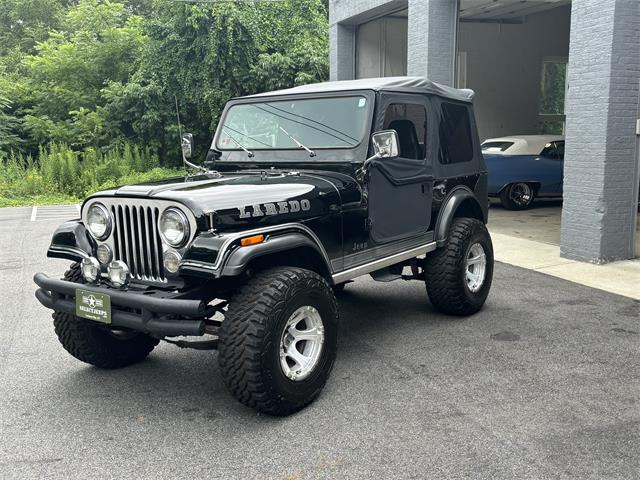
Key Features and Specifications of the 1980 CJ Series
The 1980 CJ models were built for simplicity, durability, and utility. Their specifications reflect a no-nonsense approach to off-road capability.
- Engine Options:
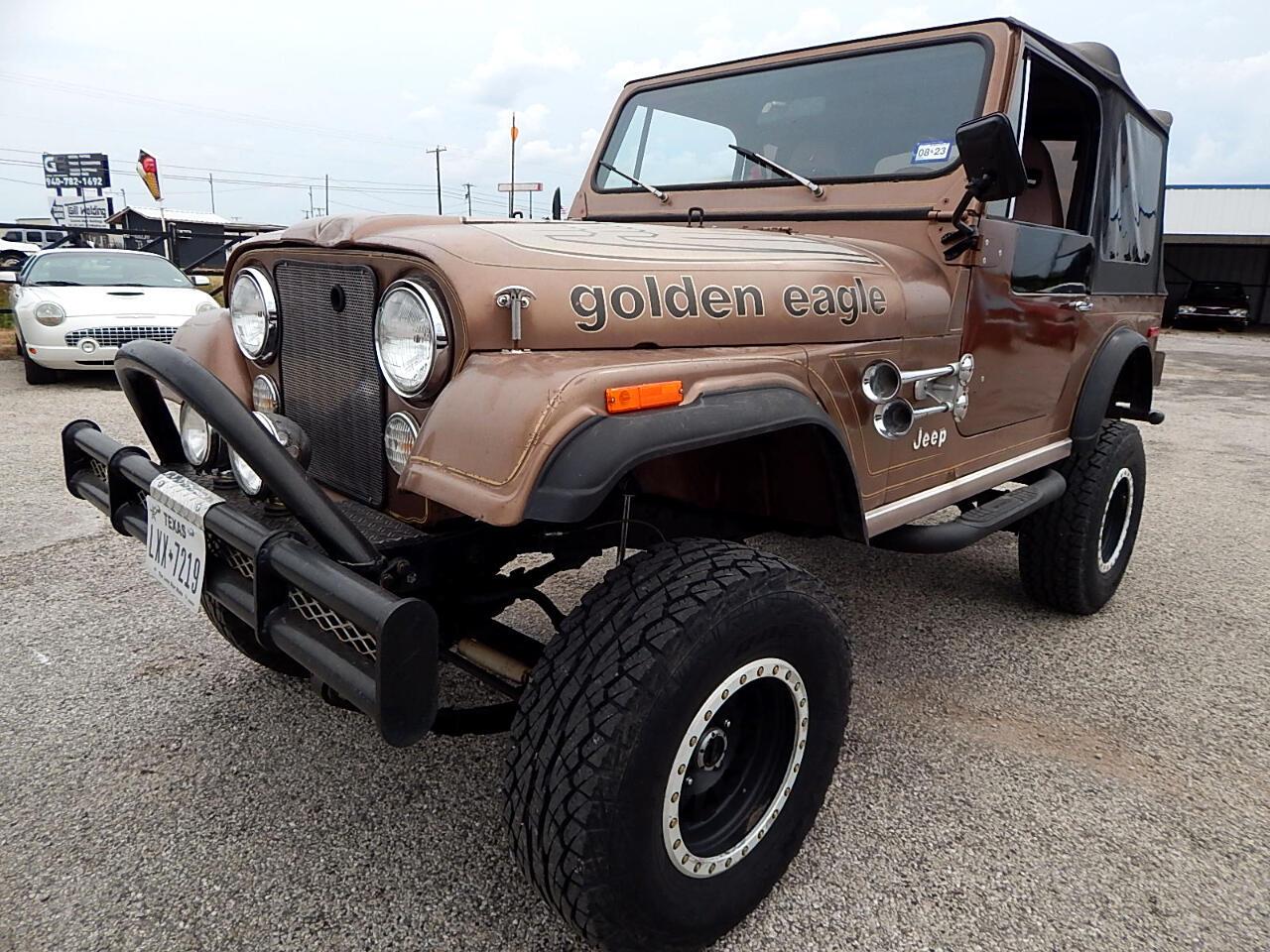
- 2.5L AMC I4 (150 cu in): The base engine, offering adequate power for light duty and decent fuel economy (by 1980 standards).
- 4.2L AMC I6 (258 cu in): The most popular and arguably the most beloved engine for the CJ. Known for its torque, reliability, and simplicity, this inline-six was a workhorse, providing ample power for off-roading and cruising.
- 5.0L AMC V8 (304 cu in): Available in the CJ-7, this V8 offered the most power and a classic V8 rumble, though at the expense of fuel efficiency. It was a desirable option for those seeking maximum performance.
- Transmissions:
- Manual: T-150 3-speed, T-176 4-speed (heavy-duty), or Borg-Warner T-4/T-5 4/5-speed manual options. These were robust and reliable.
- Automatic: Chrysler 999 3-speed automatic (available only in CJ-7 with the 258 or 304 engine).
- Drivetrain:
- Transfer Case: Typically the Dana 20 (part-time 4WD, twin-stick shifter) or the New Process 208 (NP208) in later 1980 models (shift-on-the-fly 4WD, single shifter).
- Axles: Dana 30 front axle and AMC 20 rear axle were standard. The AMC 20, while strong, was known for a weak two-piece axle shaft design that often needed upgrading for serious off-roading.
- Suspension: Live axle, leaf spring suspension all around. This design offered excellent articulation for off-road obstacles but contributed to a somewhat harsh ride on paved roads.
- Body and Interior: Basic, rugged, and functional. Steel body with removable doors, folding windshield, and soft top options (hard tops were also available). The interior was spartan, featuring simple gauges, vinyl seats, and a durable floor that could be hosed out.

The 1980 Jeep Driving Experience: Benefits and Challenges
Owning and driving a 1980 CJ is a unique experience, a blend of pure driving pleasure and classic vehicle quirks.
Benefits:
- Unrivaled Off-Road Prowess: This is where the CJ shines. Its short wheelbase (especially the CJ-5), high ground clearance, robust drivetrain, and excellent approach/departure angles make it incredibly capable on trails, rocks, and mud.
- Simplicity and Repairability: With fewer electronics and straightforward mechanicals, CJs are relatively easy to work on, even for amateur mechanics. Parts are still widely available, both OEM and aftermarket.
- Classic Aesthetic: The timeless, rugged design of the CJ is instantly recognizable and highly desirable. It exudes a nostalgic charm that modern vehicles simply can’t replicate.
- Open-Air Freedom: The removable doors, soft top, and folding windshield offer an unparalleled connection to the environment, a core part of the Jeep experience.
- Strong Community: A passionate and supportive community of CJ owners exists, providing a wealth of knowledge, tips, and camaraderie.
- Modularity: CJs are a blank canvas for customization. Lifts, bigger tires, engine swaps, and various accessories are common, allowing owners to tailor their Jeep to their specific needs.
Challenges:
- On-Road Manners: CJs are not known for their smooth, comfortable ride. The leaf spring suspension is stiff, steering can be vague, and wind noise is significant, especially with a soft top. They require a driver who is engaged and accustomed to a more "primitive" driving feel.
- Safety Features (or Lack Thereof): Being a product of 1980, CJs lack modern safety features like airbags, ABS, stability control, or even robust crumple zones. Rollover risk is higher due to their narrow track and high center of gravity, especially when lifted.
- Rust: Rust is the archenemy of vintage Jeeps. Frames, body tubs, floorboards, and fenders are highly susceptible, especially in areas with road salt or high humidity. Thorough inspection for rust is crucial.
- Fuel Economy: Even with the smaller engines, fuel efficiency is poor by modern standards, particularly with the 4.2L I6 or 5.0L V8.
- Comfort: The interiors are basic. Don’t expect plush seats, climate control, or sound insulation. This is a vehicle built for function over luxury.
Buying and Owning a 1980 Jeep CJ: Important Considerations
Acquiring a 1980 CJ requires careful consideration. It’s not just buying a car; it’s adopting a piece of history that requires ongoing attention.
- Thorough Rust Inspection: This is paramount. Pay close attention to the frame (especially around the steering box and spring hangers), body mounts, floorboards, rocker panels, and rear quarter panels. A heavily rusted frame can be a deal-breaker.
- Mechanical Soundness: Check for engine leaks, strange noises from the drivetrain (transmission, transfer case, differentials), and the condition of the brakes and steering components. Test the 4WD system thoroughly.
- Originality vs. Modifications: Decide if you want a stock vehicle for restoration or a modified one for off-roading. Heavily modified CJs can hide underlying issues if the work wasn’t done professionally.
- Parts Availability: While many parts are available, specific trim pieces or unique components might be harder to find. Mechanical parts are generally abundant due to the CJ’s long production run and commonality with other AMC vehicles.
- Insurance and Registration: Insuring a vintage vehicle may require specialized classic car insurance, which can sometimes be more affordable but comes with mileage restrictions.
- Your Skill Level: Are you comfortable with basic automotive maintenance? Owning an older vehicle often means getting your hands dirty. If not, budget for professional help.
Restoration vs. Customization: Your 1980 Jeep Journey
Once you own a 1980 CJ, you embark on a journey. Many choose to restore them to original condition, while others prefer to customize them for specific uses.
- Restoration:
- Goal: Preserve historical accuracy and original appearance.
- Tips: Seek out original components, match factory paint codes, restore original drivetrains. This can be more expensive as original parts can be rare.
- Benefits: High collector value, unique driving experience, a tangible piece of automotive history.
- Customization (Resto-mod/Off-road Build):
- Goal: Enhance performance, comfort, or tailor the vehicle for specific off-road adventures.
- Tips: Common upgrades include lift kits, larger tires, aftermarket seats, engine swaps (e.g., Chevy V8), axle upgrades (e.g., Ford 8.8 or Dana 44), modern fuel injection.
- Benefits: Improved drivability, enhanced off-road capability, personalized vehicle, better reliability for daily use (if done correctly).
Regardless of your path, consistent maintenance is key. Regular fluid changes, lubrication of chassis components, and addressing minor issues promptly will ensure your 1980 CJ continues to deliver smiles for years to come.
Price Table: Estimated Values for 1980 Jeep CJ-7 and CJ-5
Please note that these are highly generalized estimates for the current market value of 1980 Jeep CJ-7 and CJ-5 models. Original MSRPs were significantly lower. Actual prices can vary wildly based on location, specific options, modifications, rust levels, and overall condition. A "perfect" show-quality example will command a premium, while a "parts donor" will be at the lower end.
| Condition Category | 1980 Jeep CJ-5 (Estimated Price Range) | 1980 Jeep CJ-7 (Estimated Price Range) | Description |
|---|---|---|---|
| Project/Parts | $2,000 – $5,000 | $3,000 – $7,000 | Significant rust, non-running engine, major mechanical issues, incomplete. Requires extensive restoration or is suitable only for parts. |
| Fair/Driver | $6,000 – $12,000 | $8,000 – $15,000 | Runs and drives, but has noticeable rust, dents, worn interior, and likely needs significant mechanical work (brakes, suspension, engine tune-up). Can be driven but not reliably or comfortably for long distances. |
| Good/Modified | $13,000 – $25,000 | $16,000 – $35,000 | Solid frame, minimal rust, decent paint and interior. Mechanically sound with some upgrades (lift, tires, engine tweaks). Suitable for regular driving and light off-roading. May have some minor issues or cosmetic flaws. |
| Excellent/Restored | $26,000 – $45,000+ | $36,000 – $60,000+ | Professionally restored or very well-maintained original. Little to no rust, excellent paint, clean interior, strong mechanicals. May be a show-quality vehicle or a meticulously built off-road machine. Prices can go significantly higher for rare models or highly customized builds. |
Note: These prices are for the current market (2023/2024) and reflect the collector and enthusiast demand for these classic Jeeps.
Frequently Asked Questions (FAQ) about the "Wrangler Jeep 1980"
Q1: Was there really a "Wrangler Jeep 1980"?
A1: No, the Jeep Wrangler model line was first introduced in 1986. In 1980, the direct ancestors to the Wrangler were the Jeep CJ-7 and the Jeep CJ-5. When people refer to a "Wrangler Jeep 1980," they are almost certainly thinking of one of these CJ models.
Q2: What engines were available in the 1980 Jeep CJ series?
A2: The 1980 CJs typically offered three engine choices: the 2.5L AMC inline-4, the popular 4.2L AMC inline-6 (258 cubic inches), and the more powerful 5.0L AMC V8 (304 cubic inches), which was primarily available in the CJ-7.
Q3: Are parts still available for a 1980 Jeep CJ?
A3: Yes, remarkably so! Due to the CJ’s long production run and popularity, a vast aftermarket exists for replacement parts, upgrade components, and even full body tubs and frame sections. Mechanical parts are generally easy to find, though some specific trim pieces might require more searching.
Q4: Is a 1980 Jeep CJ a good daily driver today?
A4: Generally, no. While some well-maintained or "resto-modded" CJs can serve as occasional drivers, they lack the comfort, safety features, fuel efficiency, and smooth on-road manners of modern vehicles. They are best suited as weekend cruisers, off-road toys, or project vehicles.
Q5: What’s the main difference between the CJ-5 and CJ-7 from 1980?
A5: The primary difference is the wheelbase. The CJ-5 has a shorter 81-inch wheelbase, making it very nimble but less stable and with less interior room. The CJ-7 has a longer 93.5-inch wheelbase, offering a more stable ride, more interior space, and the option for an automatic transmission and full doors.
Q6: What should I look for when buying a 1980 Jeep CJ?
A6: The absolute top priority is rust, particularly on the frame, body mounts, and floorboards. After that, check for the overall mechanical condition of the engine, transmission, transfer case, and axles. Also, assess the condition of the suspension, steering, and brakes. A pre-purchase inspection by a knowledgeable mechanic is highly recommended.
Q7: How does a 1980 CJ compare to modern Wranglers?
A7: The 1980 CJ is a much more raw and analog driving experience. It’s simpler, less refined, and lacks modern safety and convenience features. Modern Wranglers offer significantly more comfort, safety, electronic aids (like traction control, hill descent), and refined on-road manners, while still maintaining impressive off-road capability. The CJ offers a direct, visceral connection to the road and trail that is unique to vintage vehicles.
Conclusion: The Unmistakable Legacy of the 1980 Jeep CJ
While the "Wrangler Jeep 1980" is a historical misnomer, the legacy and spirit it conjures are undeniably real and belong to the formidable Jeep CJ series of that year. The 1980 CJ-7 and CJ-5 were more than just vehicles; they were symbols of freedom, adventure, and rugged individuality. They represented the pinnacle of analog off-roading, built with straightforward engineering that allowed for easy maintenance, customization, and an intimate connection between driver and machine.
Today, these vintage CJs remain highly sought after by enthusiasts who appreciate their timeless design, go-anywhere capability, and the pure, unfiltered driving experience they offer. Owning a 1980 CJ is an investment in a piece of automotive history, a commitment to a unique lifestyle, and a continuous journey of discovery, whether you’re tackling a challenging trail or simply cruising down a back road with the top down. The spirit of the "Wrangler Jeep 1980" lives on, robust and enduring, in the classic lines and unstoppable heart of the Jeep CJ.

